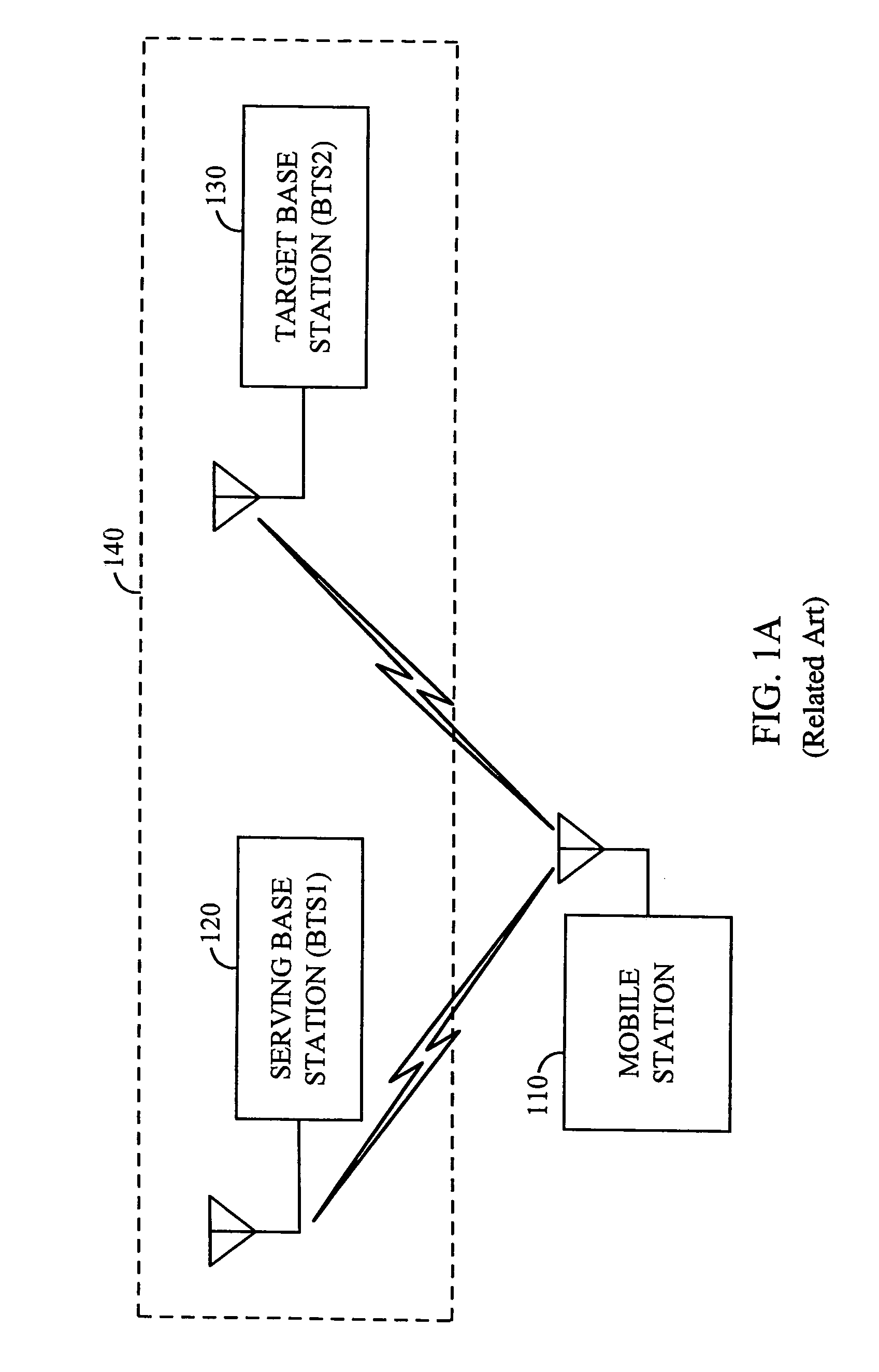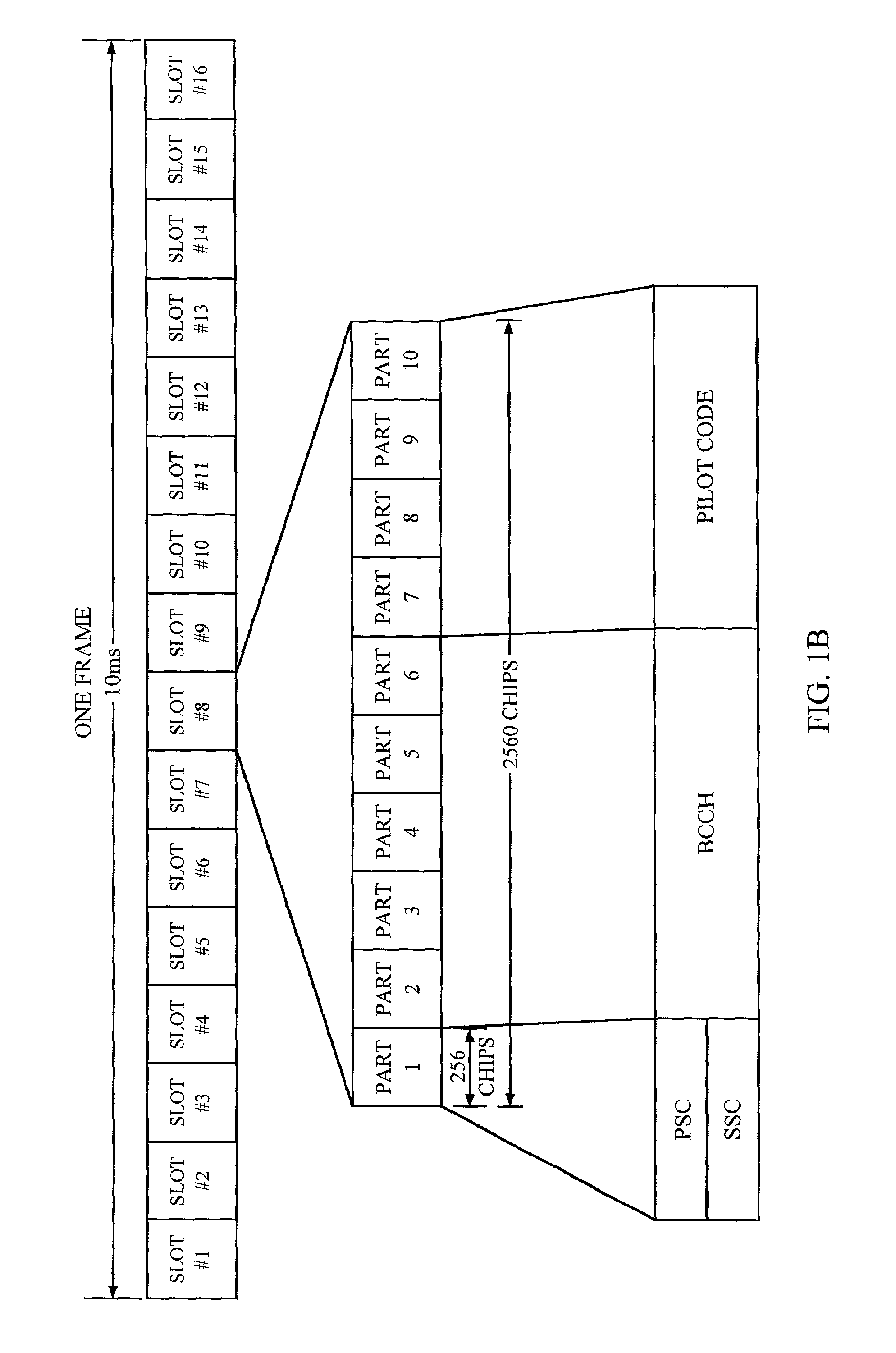Method and system for handoff between an asychronous CDMA base station and a synchronous CDMA base station
- Summary
- Abstract
- Description
- Claims
- Application Information
AI Technical Summary
Benefits of technology
Problems solved by technology
Method used
Image
Examples
Embodiment Construction
[0050]FIG. 2 is a diagram showing the timing associated with performing handoff of a mobile station (MS) between a first synchronous base station (BTS1) and a second synchronous base station (BTS2). In an exemplary embodiment, the handoff may be a “hard” handoff, in which the MS does not receive information from BTS1 once a communication link has been established with BTS2. More advantageously, the handoff is a “soft” handoff, in which the MS receives signals from both BTS1 and BTS2 simultaneously once a handoff is established.
[0051]Though only one serving base station is shown, an MS may communicate with multiple serving base stations in soft handoff and may establish a handoff to multiple target base stations. In an exemplary embodiment, both BTS1 and BTS2 are synchronized to an external time reference, for example GPS. Each of BTS1 and BTS2 uses the external time reference to establish a CDMA System Time. BTS1 establishes a BTS1 CDMA System Time, and BTS2 establishes a BTS2 CDMA ...
PUM
 Login to View More
Login to View More Abstract
Description
Claims
Application Information
 Login to View More
Login to View More - R&D
- Intellectual Property
- Life Sciences
- Materials
- Tech Scout
- Unparalleled Data Quality
- Higher Quality Content
- 60% Fewer Hallucinations
Browse by: Latest US Patents, China's latest patents, Technical Efficacy Thesaurus, Application Domain, Technology Topic, Popular Technical Reports.
© 2025 PatSnap. All rights reserved.Legal|Privacy policy|Modern Slavery Act Transparency Statement|Sitemap|About US| Contact US: help@patsnap.com



